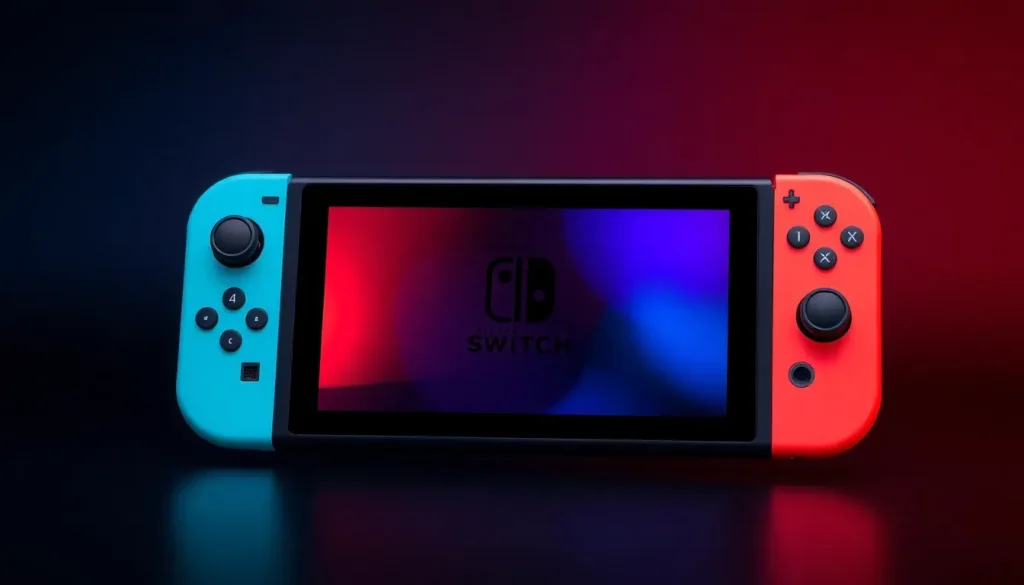Nintendo Switch 2 uses two types of DLSS for games and resolution

The gaming world has been buzzing with excitement since Nintendo unveiled its highly anticipated successor to the original Switch. The new console, dubbed the Nintendo Switch 2, promises significant upgrades in performance and graphics capabilities, including support for advanced technologies like NVIDIA's Deep Learning Super Sampling (DLSS). This innovation marks a major leap forward in console gaming, allowing players to experience titles in stunning detail and high frame rates. Let’s delve into what makes the Nintendo Switch 2 a game-changer and how it utilizes DLSS technology to enhance gameplay.
Nintendo Switch 2: A New Era in Portable Gaming
Nintendo first launched the original Switch in March 2017, revolutionizing the way players interacted with their games. With the ability to seamlessly transition from handheld mode to TV mode via a dock, it quickly became a favorite among gamers. The Switch was a direct response to the less successful Wii U and has since sold millions of units, even setting records for sales in its early days.
Fast forward to 2025, and Nintendo has introduced the Switch 2, a console designed to meet the demands of modern gamers. This new iteration is not just about improved graphics; it’s about redefining the gaming experience. With promises of up to 4K resolution in docked mode and 1080p at 120 FPS in handheld mode, the Switch 2 aims to deliver performance that rivals many current-generation consoles.
The excitement surrounding the Switch 2 is palpable, especially considering the challenges faced by the original model, which often struggled to maintain consistent frame rates and resolutions. The introduction of DLSS technology is a significant factor in this upgrade, allowing for impressive visual fidelity without the need for more powerful hardware.
The Role of DLSS in the Nintendo Switch 2
DLSS stands for Deep Learning Super Sampling, a technology developed by NVIDIA that uses artificial intelligence to upscale lower-resolution images to higher resolutions while maintaining visual quality. This means that even if a game runs at a lower native resolution, DLSS can enhance it to look almost indistinguishable from higher resolutions.
There are two distinct types of DLSS being utilized by the Nintendo Switch 2, each catering to different gaming needs:
- DLSS Type 1: This variant is akin to DLSS CNN on PC, which focuses on enhancing 1080p gaming experiences.
- DLSS Type 2: This optimized version sacrifices some image detail to achieve up to 4K resolution, making it suitable for more demanding titles.
This dual approach allows the Switch 2 to offer a flexible gaming experience, adapting to the specific requirements of each title while maximizing performance.
Understanding the Two Types of DLSS in Detail
As mentioned, the Nintendo Switch 2 employs two different types of DLSS, each with its unique characteristics and applications:
- DLSS Type 1: Ideal for games that are primarily focused on 1080p resolutions, this type enhances image quality by applying advanced anti-aliasing techniques. It helps smooth out edges and improves overall visual fidelity, making it a great fit for less resource-intensive titles.
- DLSS Type 2: This version is designed for superior performance, particularly in graphically demanding games. It prioritizes reaching higher resolutions—up to 4K—by using fewer resources, although it may sacrifice some anti-aliasing features in motion or during camera cuts.
The combination of these two DLSS types demonstrates Nintendo's commitment to providing gamers with a rich visual experience, regardless of the game's demands.
Performance Comparisons: What Players Can Expect
To understand the impact of these DLSS technologies, let's look at performance comparisons across various titles:
- Cyberpunk 2077: Initial tests indicate that the Switch 2, using DLSS, can achieve a visual quality similar to a DLSS 1080p setup on PC. However, PC graphics retain a sharper clarity.
- Street Fighter 6: While the Switch 2 may not deliver the sharpest image in this title, it offers a more natural appearance, albeit at the cost of detail.
- Hogwarts Legacy: In this case, the Switch 2 demonstrates a clearer image than a 1440p output, although it suffers from noticeable aliasing artifacts.
- Star Wars Outlaws: This title showcases the Switch 2’s capability to match the visual fidelity of a PC running DLSS CNN Preset E at 1080p, demonstrating its versatility.
These comparisons illustrate how Nintendo has harnessed DLSS to push the boundaries of its hardware, allowing for more complex graphics and smoother gameplay.
Conclusion
The Nintendo Switch 2 represents a significant leap forward in console technology, particularly with its incorporation of DLSS. By utilizing two distinct types of DLSS, Nintendo is able to deliver a customizable gaming experience that caters to diverse player preferences and game requirements. With its potential for high-resolution gaming and improved frame rates, the Switch 2 is poised to become a favorite among gamers looking for both performance and portability.
For a more in-depth analysis of the Switch 2's graphics capabilities, check out this insightful video:




Leave a Reply